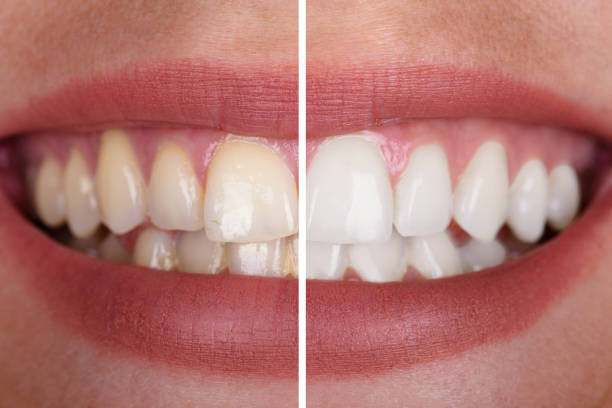Have you heard of how long until a tooth infection kills you? Bacteria can cause a tooth infection if they get inside the pulp, which is the tooth’s nerve or soft tissue. This might happen as a result of tooth decay, trauma, or prior dental work.
Even though it’s unlikely, you could pass away from a tooth infection. Within weeks or months, an untreated tooth infection can spread to other bodily tissues and cause possibly fatal consequences. We’ll discuss the details below.
Table of Contents
Can You Die From A Tooth Infection?
When germs get inside your tooth, which has a soft tissue called the pulp, it causes a tooth infection. A pus pocket forms around the infected tooth as the infection worsens. It’s referred to as a dental abscess.
Dental infections were ranked as the fifth or sixth most common cause of death in London in the 1600s. Dental infections still caused death 10 to 40% of the time even up until 1908.
Death from a tooth infection is now incredibly uncommon thanks to developments in medicine and dental hygiene. Even so, it’s crucial to get treatment right away if you think you have an infected tooth.
A tooth infection that is not treated can spread to other parts of the body and result in significant, even life-threatening problems, such as:
- Sepsis is the term for the body’s extreme response to an infection.
- A severe bacterial infection that affects the floor of the mouth and the area under the tongue is known as Ludwig’s angina.
- A severe illness that causes the body’s soft tissues to die is necrotizing fasciitis.
- A mediastinum infection, or mediastinitis, is an inflammation of the area between your lungs.
- Endocarditis is an inflammation of the endocardium, the inside lining of your heart.
- A potentially fatal blood clot in the sinuses, right behind the eyes and under the brain, is known as cavernous sinus thrombosis.
- A bone tissue infection is called osteomyelitis.
- A brain abscess is a possible term for a buildup of pus in the brain.
How Can You Know If You Are Dying From A Tooth Infection?
You’ll know the tooth infection is trying to kill you when the swelling from the infection moves down toward your throat, effectively blocking your airway space and leaving you unable to breathe. even if you could be asleep right now. This appears to be a throat swelling that is really serious. The swelling will be so significant that your face will appear misshapen and mangled.
Don’t be fooled; a tooth infection with this much swelling IS a true medical emergency and IS potentially fatal. Instead of walking to the nearest hospital, rush there or dial 911 for help.
How Long Until A Tooth Infection Kills You?
The length of time it takes for a tooth infection to kill you is not known. Consider it in terms of phases. The sooner you receive treatment for a tooth infection, the sooner you can resume living a healthy and happy life.
It may take weeks or months for an abscess to form if a tooth infection isn’t addressed. This is due to the slow nature of the decay process and the length of time it typically takes for it to infect the pulp at the center of a tooth.
By receiving a root canal procedure after the decay has spread to the middle of the tooth, you can still keep your original tooth.
However, the germs will get to the pulp more quickly if your tooth is infected as a result of an accident or trauma.
What Occurs Once An Abscess Forms?
Once a dental abscess has developed, the area around the diseased tooth may swell and hurt intensely. You’ll probably get a cavity before it becomes an abscess. Patients frequently experience persistent tooth pain for weeks or months before seeking emergency care in cases of serious illness or death caused by tooth infections. An abscess may spread to the neck, jaw, and brain if it is not treated for several weeks or months. If care is not given, this might lead to major issues and could possibly cause death within a few days.
Your likelihood of experiencing issues from an abscess can be increased by a number of risk factors, such as:
- Being diabetic
- Being older
- Malnutrition is present
- Immune system compromised
How Frequently Does A Dental Tooth Infection Cause Death?
In the days before antibiotics, a tooth infection had a mortality rate of between 10 and 40 percent. Since penicillin was discovered, the fatality rate has significantly decreased. There isn’t much research on the prevalence of tooth infections leading to mortality, but what we can uncover shows that in a study of 297 individuals with deep head and neck infections, the rate was roughly 0.9 percent.
Our LIC dentists advise against letting an abscess develop into Ludwig’s angina since it can gravely impair a few weeks of your life, even if survival rates have significantly increased since the Middle Ages.
How to Treat Tooth Infection?
- Drainage.
Drainage is one type of dental infection treatment. To drain the abscess, a dentist will make a tiny incision in your gums. However, this is frequently employed as a stopgap solution, and more treatments are frequently required.
- A root canal.
The tooth’s infected pulp is taken out during a root canal procedure. Carefully cleaned and filled cavities are placed inside the teeth. The tooth is then restored with the use of a crown.
- Tooth removal.
If a root canal cannot save a tooth from an infection, it may need to be pulled.
- Antibiotics.
Drugs that can kill germs include antibiotics. They are occasionally used to treat infections in the teeth. You might be given oral antibiotics or intravenous (IV) medicines, depending on how serious your infection is. Along with the medications, your tooth will also require a root canal or extraction.
Conclusion
A tooth infection could result in serious or even life-threatening problems. Sepsis, Ludwig’s angina, and cavernous sinus thrombosis are a few instances.
Untreated tooth infections can, over the course of weeks or months, spread to other parts of the body. Serious symptoms like fever, breathing problems, and difficulties swallowing may result from this. Without prompt attention, death can happen very fast.
You will experience pain and see swelling around the impacted tooth when you have a dental infection. This is a cue to schedule an examination with a dentist. Effective root canal or extraction treatments are available for many tooth infections.








